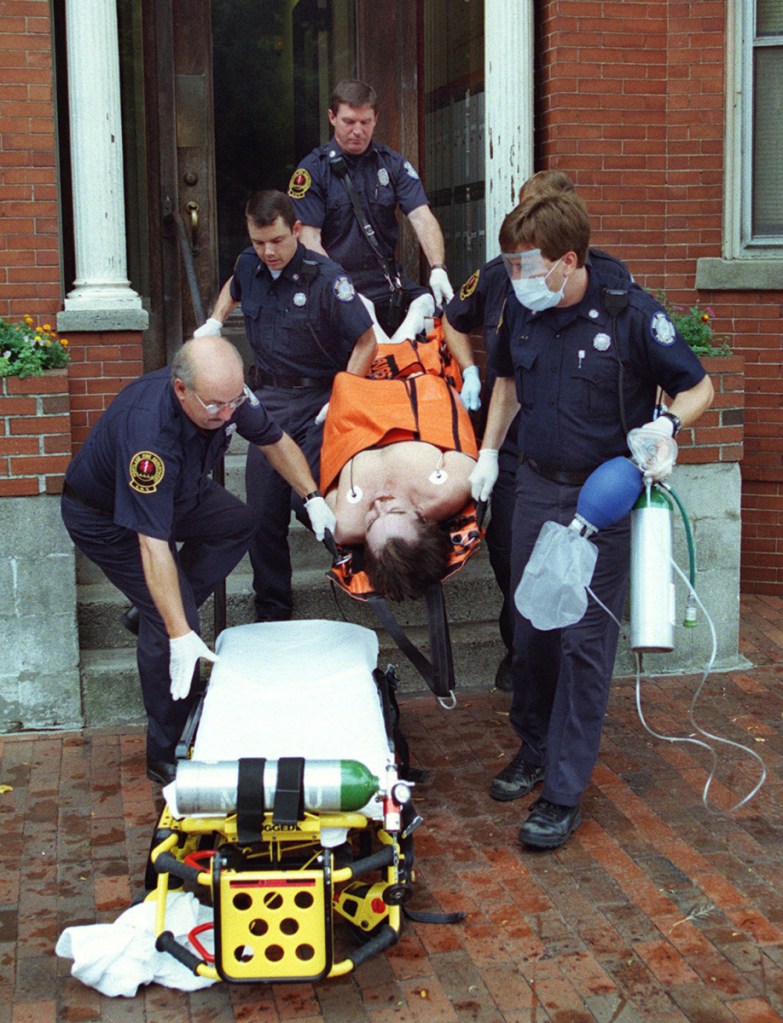President Trump’s recent announcement of a wide-ranging plan to combat the opioid epidemic has once again raised awareness of the magnitude of the crisis. The president painted a grim picture of the consequences of severe opioid use disorder and promised “action and determination and resolve.”
We can’t allow our focus on opioid overdose deaths to distract us from the larger issue: Mainers overdose on many different drugs. Maine’s recent overdose death data can help us understand emerging trends in drug use, anticipate future patterns of drug use and look ahead to solutions.
The state’s Final 2017 Drug Death Report identified the specific drug or drug category that caused overdose deaths in Maine, alone or in combination with other drugs and alcohol. Most drug deaths (79 percent) were caused by two or more drugs.
Of the 418 drug overdoses in Maine last year, 91 (22 percent) were caused by cocaine. That number has been growing since 2013, when only 13 (7 percent) deaths were caused by cocaine. Nationwide, according to the Centers for Disease Control and Prevention, cocaine was second only to heroin as the cause of overdose deaths in 2014. One reason for the increase may be that some users are exposed to cocaine in the illegal drug market through their opioid addiction, and more people are using both drugs.
In 2017, 16 deaths (4 percent) were caused by methamphetamine, which appeared for the first time in Maine’s drug death report in 2016, when seven deaths (2 percent of all fatal overdoses) were attributed to meth. While the number of these overdose deaths is small, the increase in meth-related deaths is disturbing. It is a nationwide trend, the CDC has found. Patterns of use seem to be changing, too. In the 1990s, people who used meth typically did not use opioids. Now, more people are using both drugs.
Last year in Maine, 98 deaths (23 percent) were caused by a benzodiazepine (a class of sedatives that includes Xanax and Valium). Benzodiazepines in combination with any opioid can be a deadly mix. While the percentage of Maine deaths has been relatively steady (25 percent in 2011), the number of deaths has increased from 41 in 2011; this, too, is a nationwide trend.
Substance Abuse and Mental Health Services Administration Director Kim Johnson, who formerly headed the Maine Office of Substance Abuse, recently told a reporter that she doesn’t think “what we’ve done to scale up access to treatment for opioid disorders is going to be that helpful for methamphetamine.” The same is probably true for cocaine and benzodiazepines. Medication is available for opioid use disorder (methadone and Suboxone), and naloxone (Narcan) is available to reverse opioid overdoses. Equivalent treatments or overdose-reversing medications for meth, cocaine and benzodiazepines do not exist.
The bright spot in this otherwise bleak picture is that we can learn from the past. For starters, we know that prevention works. We can prevent drug use if we dedicate time and resources to evidence-based initiatives. Early intervention is an effective tool, as well, to stop drug and alcohol use before it becomes problematic and severe.
Second, we know that family members of people with severe drug and alcohol problems need support. We know how to provide social services to support families in crisis if we focus our attention and resources. We also know how to provide support such as housing, education and employment for people in recovery so they do not start using drugs again.
Third, while we haven’t done a good job responding to the opioid crisis – and there is plenty of responsibility to go around – we can use what we have learned. We can incorporate all drugs, not just opioids, into physician education programs and treatment initiatives such as the “hub and spoke” model proposed in legislation this year, or the pilot project to support homeless opioid users.
The trick is, all of these solutions require money. We cannot be expected to solve what U.S. Surgeon General Jerome Adams calls “the nation’s most difficult health problem” on a shoestring. President Trump’s declaration of a public health emergency five months ago did not result in a significant increase in funds for Maine. His recent promise of “more money,” with no specifics, is not encouraging. His prediction that “this scourge of drug addiction will stop” will not come true without financial support.
If the past is a predictor of the future, it is clear that we cannot count on the federal government to solve the complexities of our drug crisis. The question is: Can we count on local and state decision-makers to dedicate resources to address this problem?
Send questions/comments to the editors.



Comments are no longer available on this story